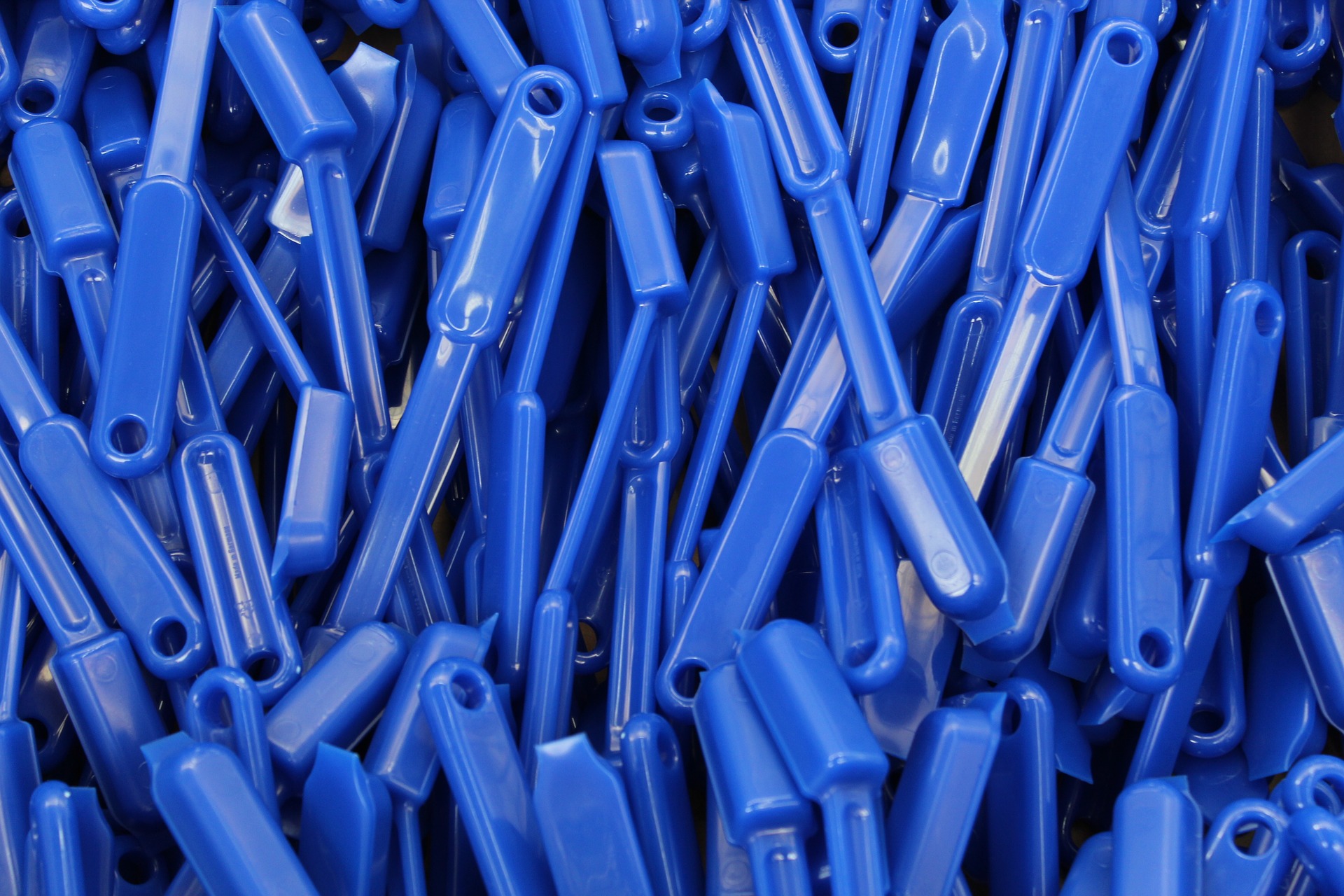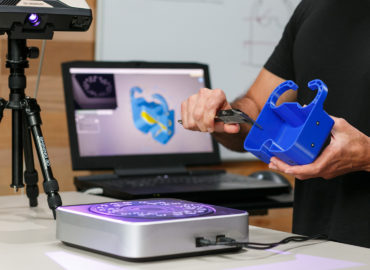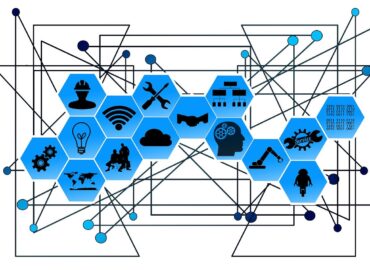Plastics are everywhere around us. Most of the products we use in our daily life consist of plastics in some form. However, all the plastics are not the same and they do not have similar properties. There are different types of plastics with a different chemical composition suitable for manufacturing different types of products.
Right from our television, car, refrigerator, etc. we have plastics in all of these products. According to the utility of these products, they require a different kind of properties and behaviors. Also, compounds of several plastics are manufactured to generate the characteristics we need for our products.
In this blog, we will talk about different types of commonly used plastics in consumer goods manufacturing industries and their characteristics.
There are 7 most commonly used plastics.
Acrylic or Polymethyl Methacrylate (PMMA)
This plastic is one of the most common substitutes of glass because of the optical properties it comes with. It is lighter than glass and has 17 times more resistance to impact in comparison to glass. Also, it is light in weight, has good resistance from shattering. These are also transparent. In addition, this plastic also can be colored and made fluorescent. Apart from these, there are various properties PMMA can provide like
- Anti-Glaring Properties
- Tolerance to Ultra Violet Rays
- Resistance to Abrasion
- Resistance to Bullet
- Also, Its Anti-static property
Examples of PMMA products are Windows, Aquarium, visors of helmet, signage, etc.
Polycarbonate (PC)
PC is a high-performance plastic generally used as an engineering plastic. This is also transparent and is a substitute for glass. In addition, It is 250 times stronger than glass and 30 times much stronger than acrylic. Unlike acrylic, it can be easily molded hence provides design flexibility. It has high design stability, high strength, and very good electrical conductivity. In conclusion, its properties are quite similar to acrylic but it has more strength and hence, it is costly too.
Some of the unique properties of PC are:
- Heat Resistance
- Chemical Resistance
- Optical Nature
- Lightweight
- Also, its Light Transmission capability
Commonly used products which make use of PC are safety helmets, bulletproof glass, car headlamp lenses, roofing, and glazing, etc.
Polyethylene (PE)
This is the most common of all the plastics. It is the polymer of ethene as the name suggests. Also, this plastic can be of different densities which give unique properties to the polyethylene of different densities.
Low-Density Polyethylene
As the name suggests it has a low density of the monomer ethene and is ductile. For example, products that make use of these plastics are shopping bags, containers, disposable packaging, etc.
Medium Density Polyethylene
As the name suggests it has more polymer chains in comparison to LDP. Therefore, this plastic can be melted, cooled, and then reheated without any change in its properties.
High-Density Polyethylene
It has a higher density than LDP AND MDP. Therefore, products that make use of HDP are water pipes, sewers, boats, folding chairs, etc.
Ultra-High Molecular weight polyethylene
It has a low density that HDP and has a high resistance to abrasion. It also has low frictional properties because of the long chain of polymers. Therefore, Products that make use of these plastics are body armor, hydraulic bearings, implants for hip, knee, etc.
Polypropylene (PP)
PP is a plastic that is produced from propene monomer and is rigid, thermoplastic, and crystalline. This is one of the cheapest of the plastics available in the market. Its unique property is its flexible nature. Moreover, it is stronger than PE but still the most flexible of the plastics.
Properties of these plastics are:
- Durability
- Acid resistance
- Heat resistance
- Also, Flexibility
The use of these plastics are in
- Automotive Industry
- Industrial Applications
- Consumer Goods, and
- Furniture Market
Polyethylene Terephthalate (PETE or PET)
PET is the 4th most produces plastics and due to its exceptional properties, it is of high utility in various areas of manufacturing. Moreover, it is a thermoplastic resin of polyester family that has a highlight property of being recyclable. Also, it is the most recyclable plastic in the world.
The unique properties of these plastics are
- Water Resistance
- Chemical Resistance
- Shatter Resistance
- High Strength to weight ratio
- Low gas permeability special to Carbon dioxide
- Excellent electrical insulator
- Safe for contact with food and liquid.
- Good gas and moisture barrier properties.
- Lightweight
- Also, it works in the Temperature range of -60C to 130C
Some of the drawbacks of these plastics are:
- Lower impact strength
- Poor burning behavior
- Not easily moldable in comparison to PBT
- Also, they are prone to attack by alkalis and strong bases
Polyvinyl Chloride (PVC)
PVC is a thermoplastic polymer that is economical and versatile. Also, it is the world’s third-largest thermoplastic polymer by volume. The main user of these plastics is the construction industry. The construction industry uses PVC to produce doors, window panels, pipes, wire & cable insulation, medical devices, etc.
PVC is nowadays replacing traditional building materials like wood, rubber, concrete, metals, etc. because of its versatile nature. It has properties like:
- Durability
- Lightweight
- Low Cost
- Chemical Resistance
- Resistance to abrasion
- Electrical Insulation
- Flame Retardancy
Also, the PVC properties can be enhanced and modified using plasticizers or compounding with other polymers.
Acrylonitrile-Butadiene-Styrene (ABS)
Polymerization of styrene and acrylonitrile in the presence of polybutadiene forms ABS. Also, It is an opaque engineering thermoplastic.
Key properties of ABS are:
- Highly Rigid
- Impact Resistance
- Good Insulator
- Weldable
- Good Abrasion resistance
- Good strain resistance
- High Dimensional stability
- Bright Surface
- Poor resistance to organic compounds
- Also, it has good resistance to Alkali and dilute acids
You can manufacture ABS in a range of thickness from 200 microns to 5mm. Also, It has a low manufacturing cost in comparison to some other plastics. It is generally used in automobile and refrigeration industries.
Here are the 7 most commonly used plastics in the manufacturing industry. Also, the selection of the right plastic material for the design of a new product is very critical for the success of that product. It requires experience and skill to select the best plastic for your product. Therefore, professionals in the Manufacturing industry need to have an understanding of the behaviors of different plastics and their compounds.
We hope you have got a fair idea about the commonly used plastics and their properties. Do not hesitate to shoot your questions and suggestions in the comment box.





